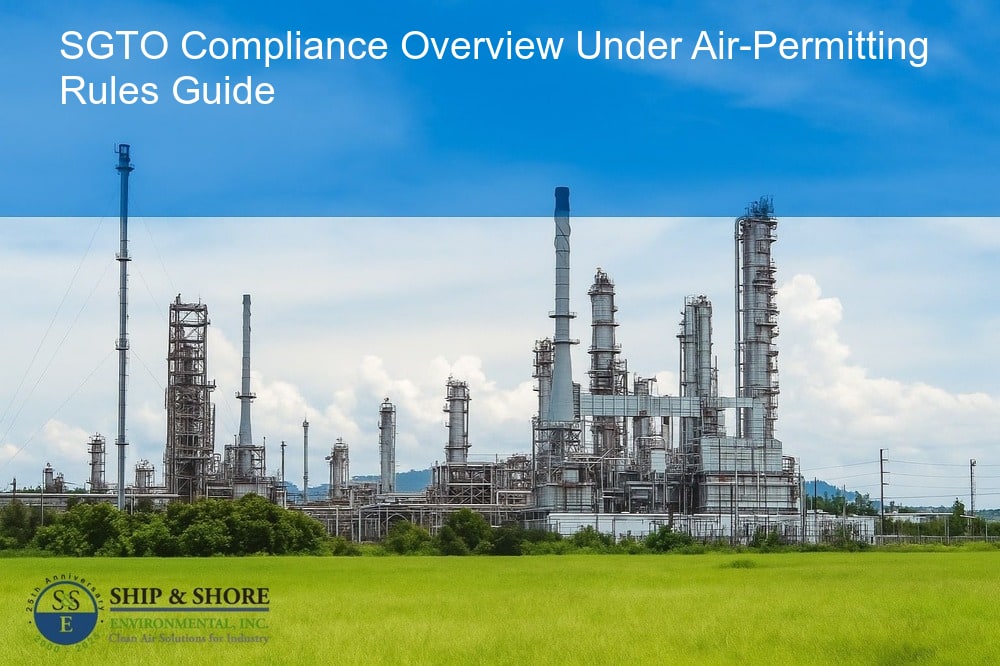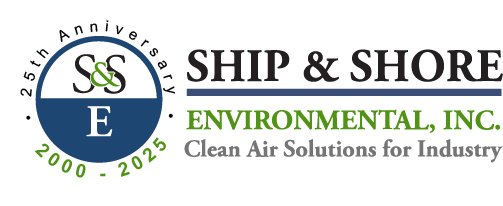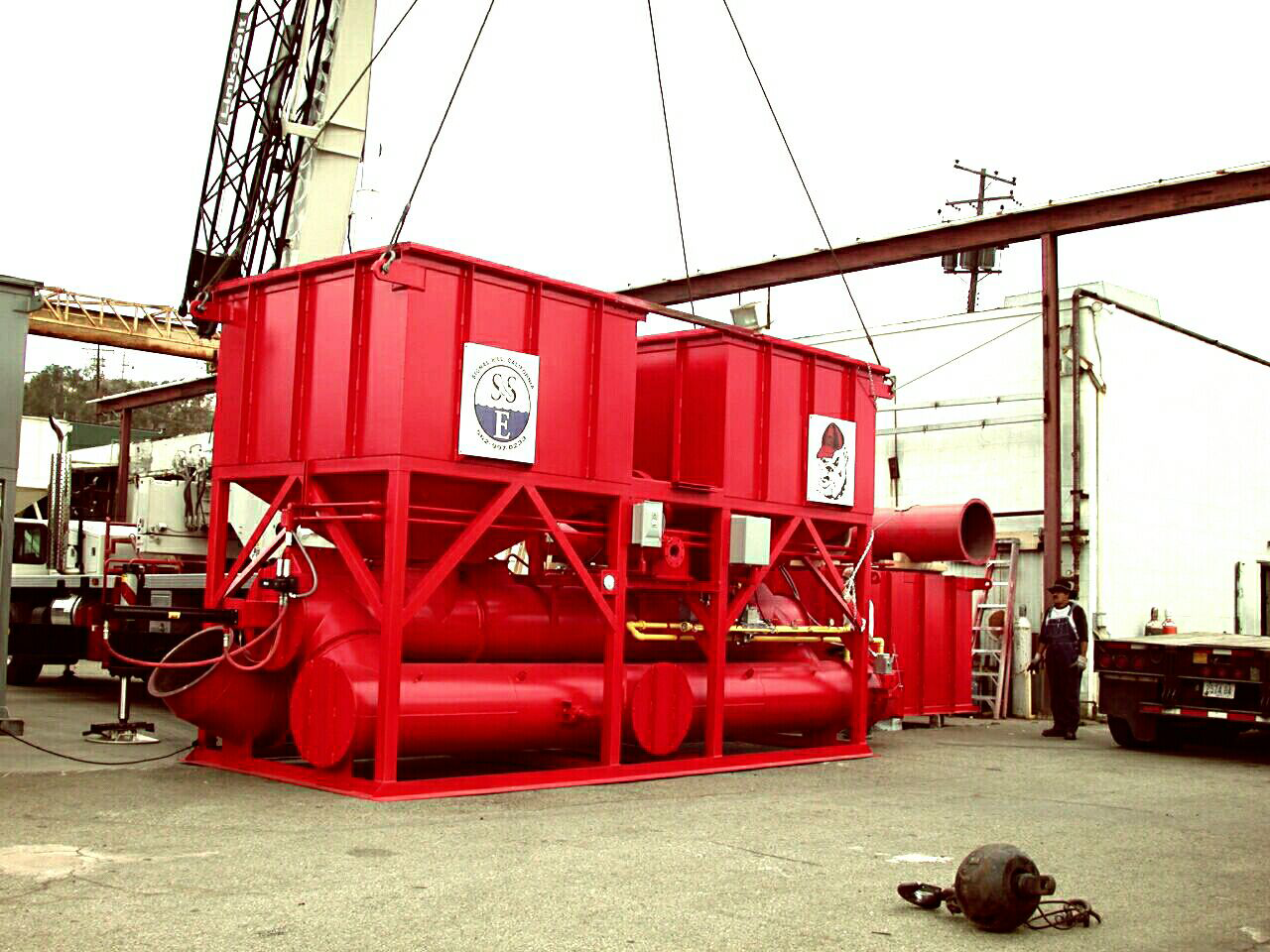
SGTO Compliance Overview Under Air-Permitting Rules: A Deep Dive
June 11, 2025 4:25 amUnderstanding the importance of air permit regulations in the industrial sector
The industrial landscape is complex and multifaceted, with regulations playing a crucial role in maintaining balance and order. Among these regulations, air permit rules are some of the most significant, underscoring the critical importance of air quality in protecting public health and the environment. Here at Ship & Shore Environmental, Inc., we recognize the value of adhering to these regulations, which is why we place a strong emphasis on “SGTO compliance overview under air-permitting rules.” In this introduction, we’ll explore the vital role that air permits play in the industrial sector and how SGTO compliance is integral to maintaining air quality standards.
The role of SGTO in maintaining air quality standards
SGTO, or Source Greenhouse Gas, Toxic, and Ozone precursors assessment, refers to the detailed evaluation of emissions from industrial sources. The role of SGTO in maintaining air quality standards is paramount, as it assesses and regulates pollutants that could significantly impact both human health and the atmosphere. Ship & Shore Environmental, Inc. is committed to ensuring that our operations meet these stringent standards. By addressing pollutants at their source, we contribute to cleaner air and a healthier environment for everyone.
Brief overview: Emphasizing SGTO compliance under air-permitting rules
To grasp the importance of SGTO compliance, it is essential to understand what it encompasses. SGTO compliance under air-permitting rules involves adhering to specific guidelines related to the emission of greenhouse gases, toxic pollutants, and ozone precursors. These rules are established by environmental authorities to mitigate the adverse effects of industrial emissions. At Ship & Shore Environmental, Inc., we diligently ensure that our practices align with these regulations. This not only helps us stay compliant but also signifies our commitment to environmental stewardship and sustainable industrial practices.
What is SGTO Compliance: An in-depth look into the parameters and requirements
SGTO (Semi-Volatile Organic Compound) compliance refers to the adherence to regulations specifically targeting the emissions of semi-volatile organic compounds. These are crucial for preventing air quality deterioration and protecting public health. SGTO regulations are rigorous, encompassing various criteria, such as emission limits, monitoring obligations, and regular reporting. We need to understand that complying with SGTO standards is not merely about meeting legal obligations but also ensuring sustainable and safe industrial practices.
The intricacies of air-permitting rules and its implications for SGTO Compliance
Navigating air-permitting rules is vital for successful SGTO compliance. These rules dictate the permissible levels of pollutants, including semi-volatile organic compounds, that a facility can emit. First, facilities must apply for and obtain the appropriate permits before construction or operation. The permits detail specific limitations, monitoring, and reporting requirements.
Furthermore, air-permitting rules involve stringent inspection and record-keeping protocols. This ensures that industries remain consistently within compliance, reducing the risk of harmful emissions. Adequate training and clear understanding among staff about these rules are crucial. This ensures that routine processes do not inadvertently lead to non-compliance, which can result in hefty fines and severe operational disruptions.
Ensuring SGTO Compliance: Proactive measures and steps industries can adopt
Adhering to SGTO compliance overview under air-permitting rules requires a proactive approach. To assist industries in maintaining compliance and achieving sustainable operations, we recommend the following measures:
- **Regular Monitoring**: Consistently monitor emission levels using state-of-the-art equipment to detect any deviations early on. Deploying advanced monitoring technologies can provide real-time data, allowing for swift corrective actions.
- **Employee Training**: Invest in regular training programs to ensure that all employees are aware of SGTO compliance requirements and understand the importance of their roles in maintaining these standards.
- **Record Keeping and Reporting**: Meticulously document all emission levels, maintenance activities, and corrective actions. Regularly submit required reports to the relevant authorities to demonstrate ongoing compliance.
- **Preventive Maintenance**: Schedule regular maintenance of equipment and infrastructure to prevent leaks or malfunctions that could lead to non-compliance with SGTO regulations.
- **Adopting Best Practices**: Implement industry best practices for reducing SGTO emissions. This can include installing advanced filtration systems, adopting cleaner production techniques, and sourcing low-emission raw materials.
By integrating these measures into daily operations, facilities can not only ensure compliance but also contribute to a cleaner and healthier environment for all.
Did you know? Staying compliant with SGTO air permitting regulations not only reduces environmental impact but can also enhance operational efficiency and public trust in industrial companies.
Impact of Aligning with SGTO Compliance Overview Under Air-Permitting Rules in the Long Run
Aligning with the SGTO compliance overview under air-permitting rules offers both immediate and long-term benefits for the industrial sector. Engaging in proactive compliance not only helps avoid legal entanglements and potential fines but also fosters a culture of responsibility and sustainability. By adhering to these regulations, our facilities can significantly lower emissions, thereby contributing to cleaner air and a healthier environment for communities around. Moreover, regulatory compliance can enhance our reputation as an environmentally conscious organization, which can attract discerning clients and investors interested in sustainable practices.
Case Study: Triumphs of Industries that Upheld SGTO Compliance
Take, for example, a recent case where a major manufacturing plant invested heavily in new technologies to meet the rigorous standards set by the SGTO compliance overview under air-permitting rules. The company implemented advanced abatement design solutions and rigorously monitored its emissions data. As a result, not only did they achieve compliance, but they also saw a substantial reduction in operating costs due to increased efficiency and lower energy consumption. The positive ripple effect extended beyond financial savings; the company experienced enhanced employee morale, better public relations, and stronger ties with regulatory bodies.
Looking Forward: Future Trends and Predictions Related to SGTO Compliance in Industrial Sectors
As we look towards the future, it becomes increasingly evident that adherence to the SGTO compliance overview under air-permitting rules is not a one-time event but an ongoing commitment. With evolving technologies, stricter regulations, and a global push for sustainability, industries must stay ahead of the curve. Innovations in emission-control technologies, real-time monitoring, and data analytics are set to play pivotal roles. We must remain vigilant and proactive, continually assessing and upgrading our processes to meet and exceed regulatory expectations. By doing so, we ensure not just compliance, but also leadership in environmental stewardship and industrial excellence.
FAQ
What does SGTO compliance entail for our industry under air permit regulations?
SGTO compliance involves adhering to specific regulations that govern the emission of pollutants from industrial operations. For our industry, this means monitoring, reporting, and managing emissions within the thresholds established by the pertinent environmental authorities. Furthermore, maintaining SGTO compliance typically requires instituting emission control strategies, installing pollution abatement technologies, and consistently updating operational practices to reduce our environmental footprint.
How does upholding air quality standards benefit our company in the long term?
By upholding air quality standards, our company solidifies its commitment to environmental protection and sustainability. Consequently, this dedication brings about lower operational costs through improved efficiencies and energy savings. Furthermore, it enhances our corporate image and credibility, opening doors to partnerships with eco-conscious stakeholders and granting us a competitive edge in the market. Ultimately, consistent compliance strengthens our position as an industry leader.
What proactive measures can our industry take to ensure compliance?
To stay ahead, our industry can implement several proactive measures. Firstly, investing in cutting-edge emission control technology is crucial. Secondly, conducting regular environmental audits helps us detect potential areas for improvement. Additionally, engaging in employee training fosters a workforce that is cognizant of and skilled in compliance-related processes. By integrating these measures into our regular operations, we are not just meeting but often surpassing compliance requirements.
Can aligning with air quality regulations positively affect our operational costs?
Absolutely, aligning with air quality regulations can lead to a noticeable reduction in operational costs. Efficient emission control technologies can lead to decreased energy use, while optimizing processes to minimize waste reduces the expenses associated with materials and disposal. Moreover, staying compliant helps us avoid costly fines and legal fees that can arise from regulatory infractions, thereby safeguarding our financial health.
What future trends might influence our approach to maintaining compliance?
In the future, we anticipate a surge in innovation related to emission control and monitoring technologies. Additionally, regulatory frameworks are likely to become more stringent, reflecting the global commitment to combating climate change. As a response, our industry will have to adopt real-time emissions data analysis and reporting, leverage advances in cleaner production techniques, and possibly participate in emission trading schemes. Embracing these trends will not only assure compliance but will also affirm our industry’s role as a champion of environmental sustainability.
Categorised in: Blog

